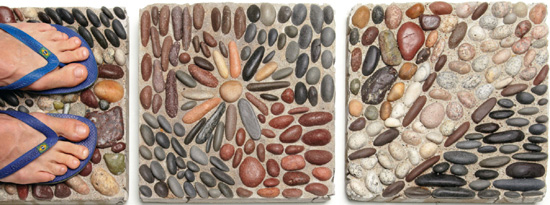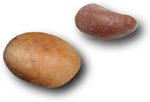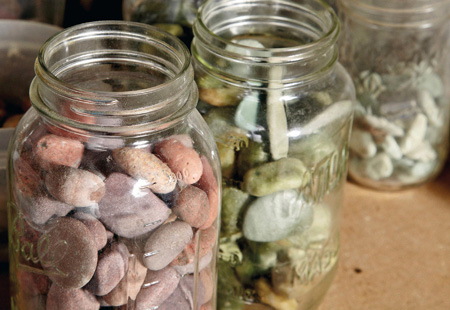


WHAT IT TAKES
Time: 4 hours
Skill level: Beginner

Love to collect pebbles? You can use them to make these beautiful pebble mosaic stepping-stones using a “dry-set” technique that makes it easy to change or adjust the pattern as you go without having to dig the stones out of wet mortar.
In addition to showing you how to make these stepping-stones, we’ve included plans for an ingenious reusable wooden mold. The initial investment for this project—about $50—gets you the plywood, a bag of mortar, pigment and muriatic acid. It’s enough material to make about seven or eight stepping-stones. After that, each one will cost you less than a dollar.
Build the mold
A small sheet of 3/4-in. plywood and some 1-1/4-in. screws are all you’ll need to build the mold. Cut out the pieces according to the Cutting List. Figure A shows how the parts go together. When you’re done, brush linseed or vegetable oil on the mold to protect it from moisture.
Start by collecting the stones
We found these stones on the north shore of Lake Superior. You’ll find similar stones in most parts of the country. Look for them in river and creek beds or along lakeshores. Wherever you find them, make sure you have permission and that it’s legal to collect them. Another possible source is your local landscape supplier or wherever landscaping stone is sold.
For this project, we sorted them by color, filling buckets and cans full of red, gray, white, brown and speckled stones. Keeping them sorted makes it a lot easier to find the right one as you create a pattern.

Some of our vast collection of rocks.

Assemble the stepping-stone
Photos 1–4 show the assembly steps. Add a little brown pigment to the dry Type S mortar mix to give the stepping-stones a mellower look. You’ll find cement pigments and Type S mortar at home centers and masonry suppliers. Or you can cheat and just mix in a little colored ceramic tile grout. Make sure to wear rubber gloves to protect your skin from the mortar, which can cause skin burns.
You don’t have to plan your pattern ahead of time. Just think of a design and start arranging the stones. It’s easier to start along the edges or in a corner and work toward the center, though. You’ll have less fitting to do as you fill in the last few stones. Keep the stones close together and oriented with the long axis up and down. While it’s tempting, avoid laying a stone flat. It doesn’t look as good as you think it will and is more likely to pop out later. When you’re done tamping the stones into the dry mortar, inspect the space between the stones to see if there are spots that require more mortar. They should be buried at least halfway. Fill sparse areas with more mortar. Dust any dry mortar off the stones with a small brush.
The trickiest part of the process is wetting the mortar (Photo 5). We can’t tell you exactly how much water to add, but it’s better to sprinkle on several small doses than to get impatient and risk adding too much. The key is to alternate between wetting the top and tapping on the mold with the rubber mallet until it seems like not all of the water is being absorbed and bubbles quit appearing (Photo 6). Expect to spend about 45 minutes sprinkling and tapping.
When the mortar is thoroughly dampened, set the completed stepping-stone in a shady spot and cover it with a damp cloth and plastic. Wait at least 48 hours before removing the mold.
After you remove the mold from the stepping-stone (Photo 7), brush the stone off to remove any loose mortar and rinse it with clear water. If, after drying, the embedded stones have a film of mortar on them, clean it off with muriatic acid diluted according to the instructions on the container. Remember, always add acid to water, not the other way around, and wear rubber gloves and safety glasses.
To enhance the color of the stones, coat them with stone sealer. You’ll find stone sealers at home centers, masonry, landscape and tile suppliers, and online.